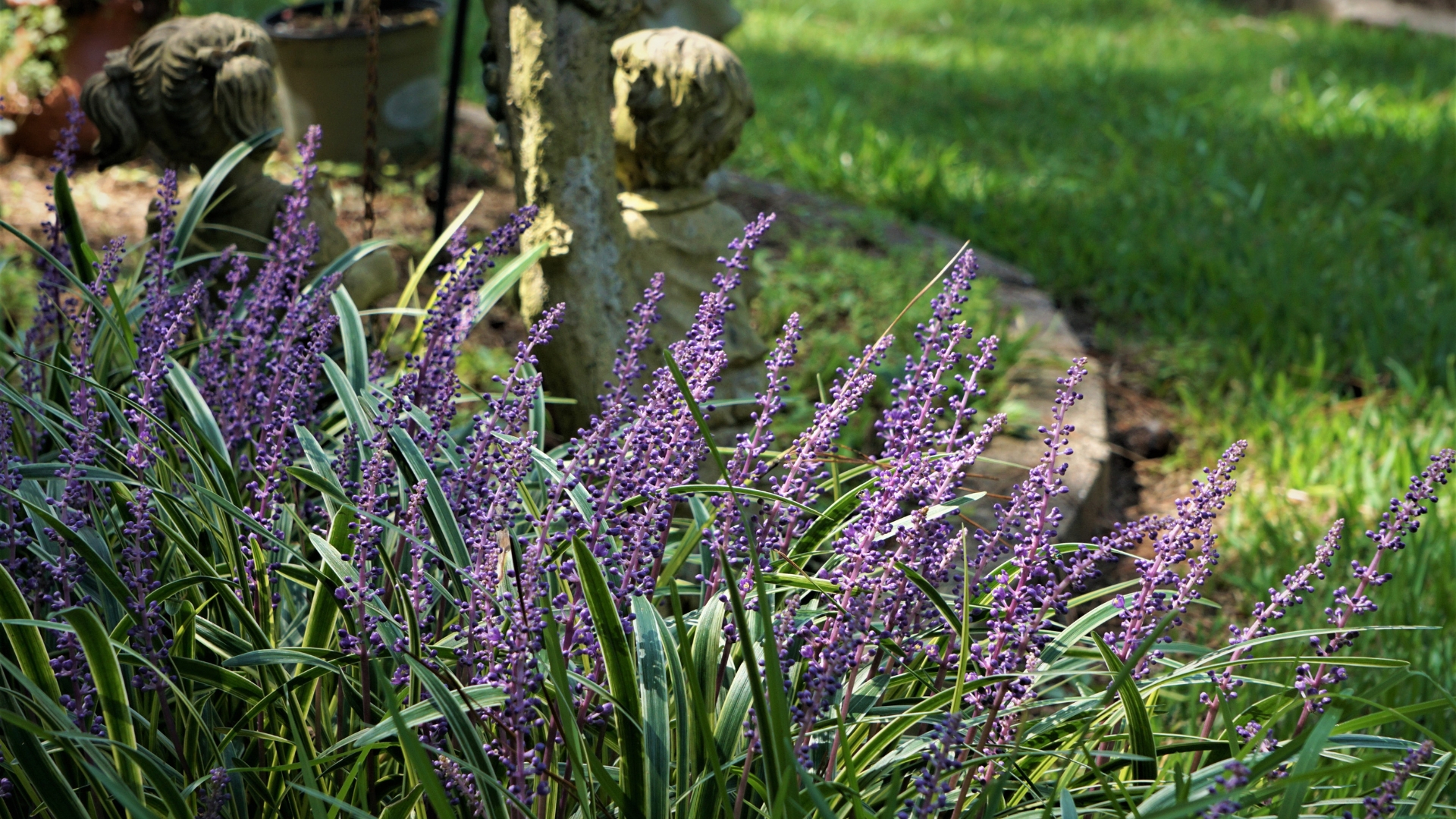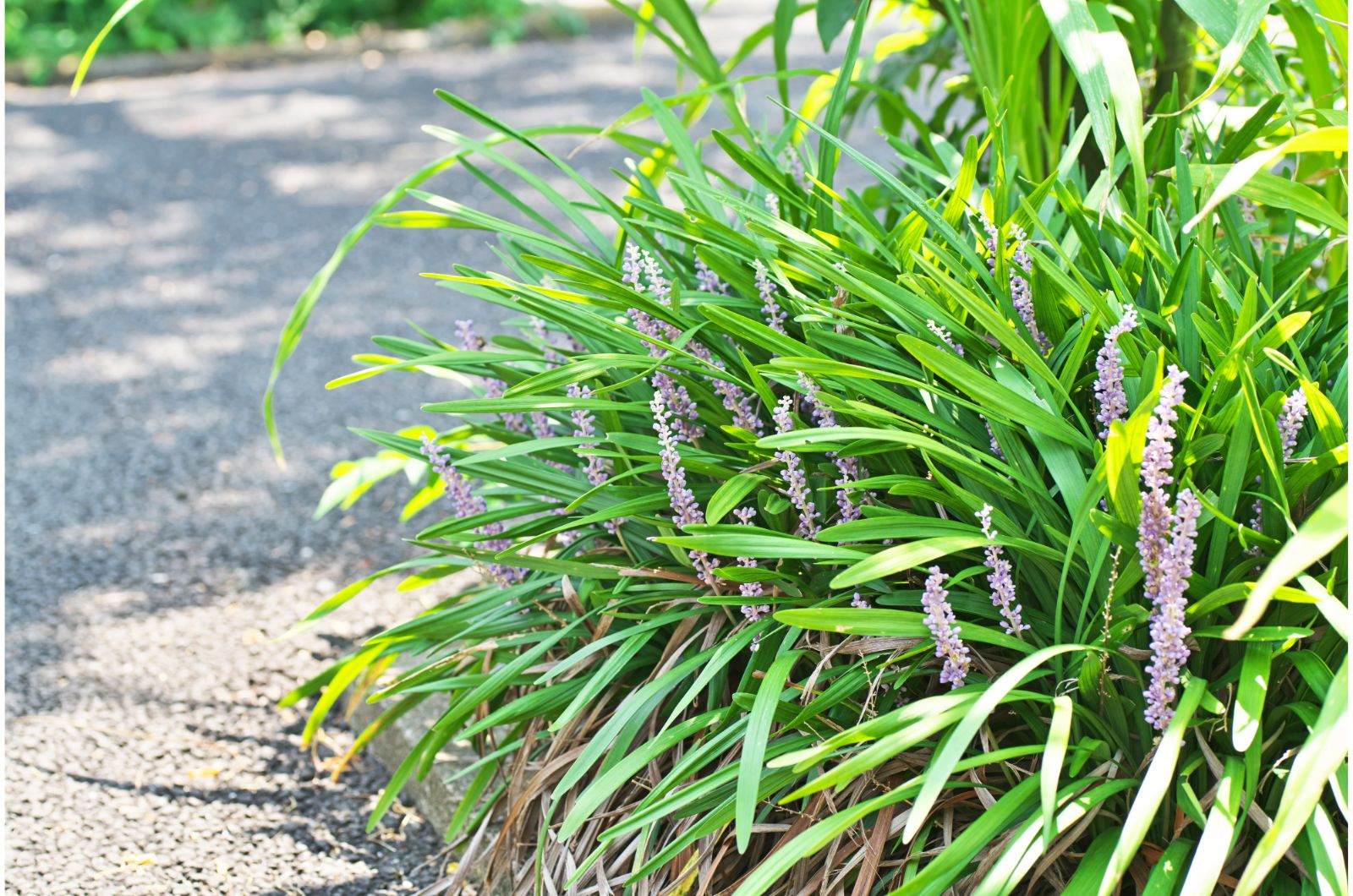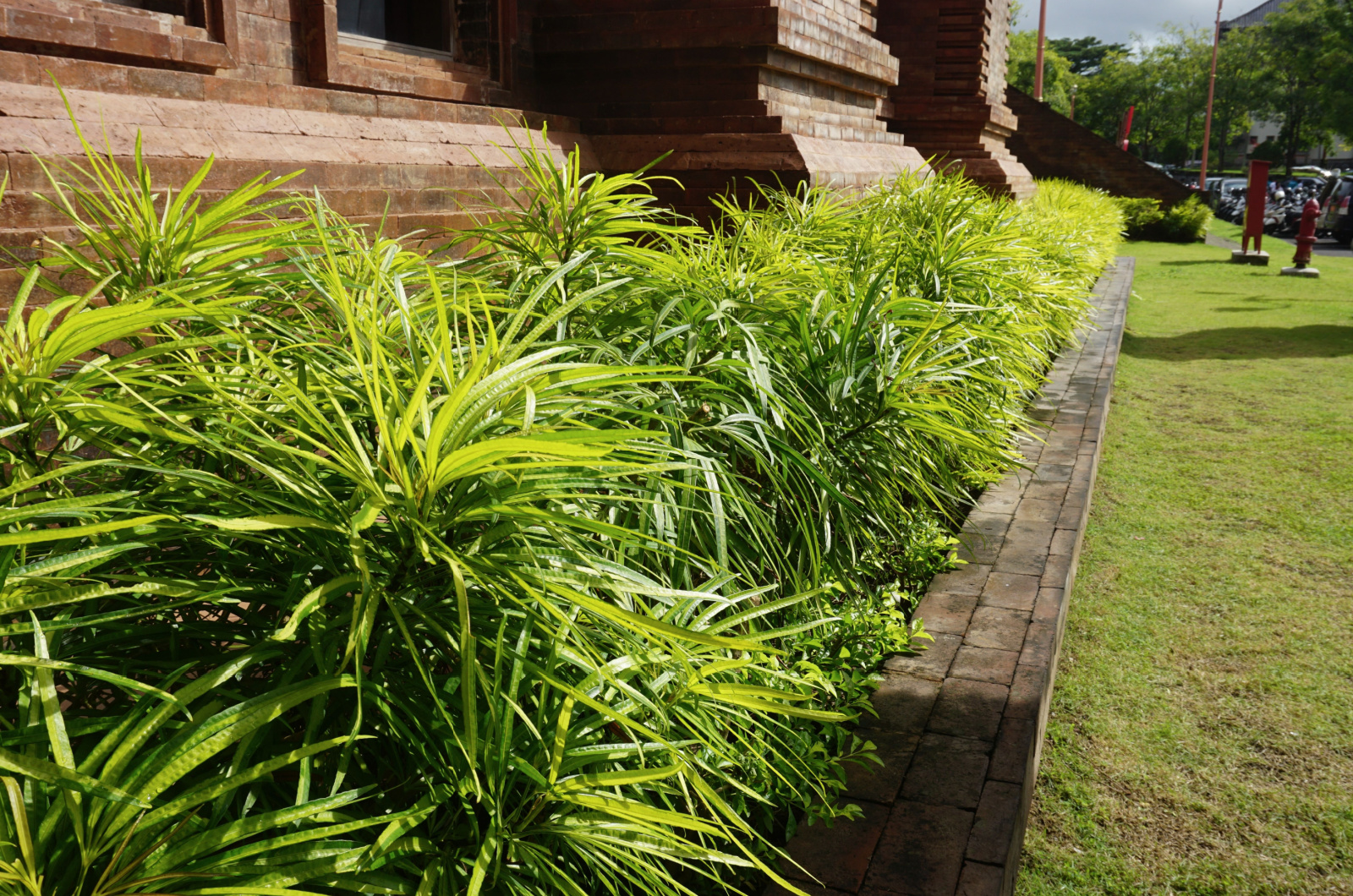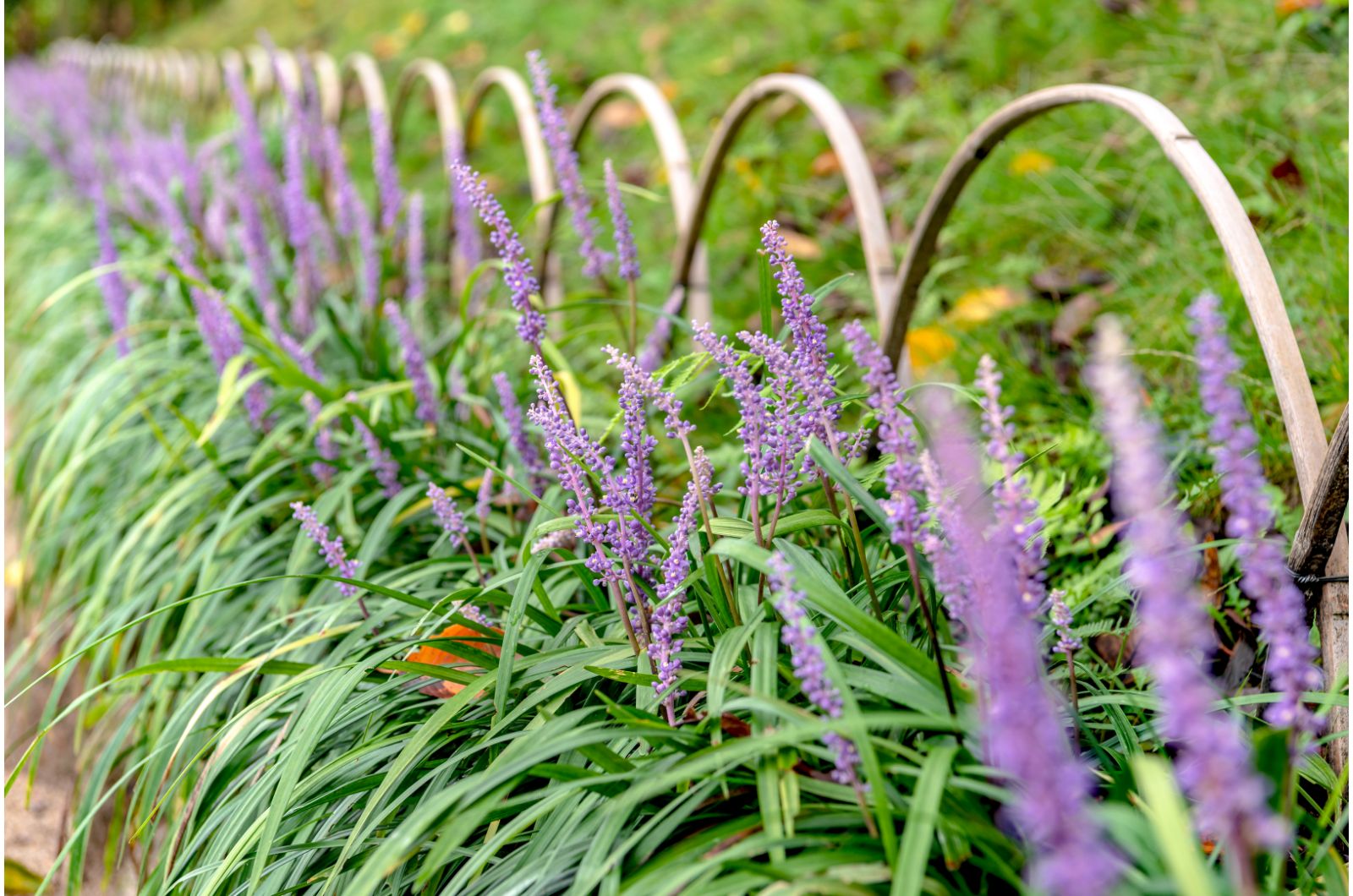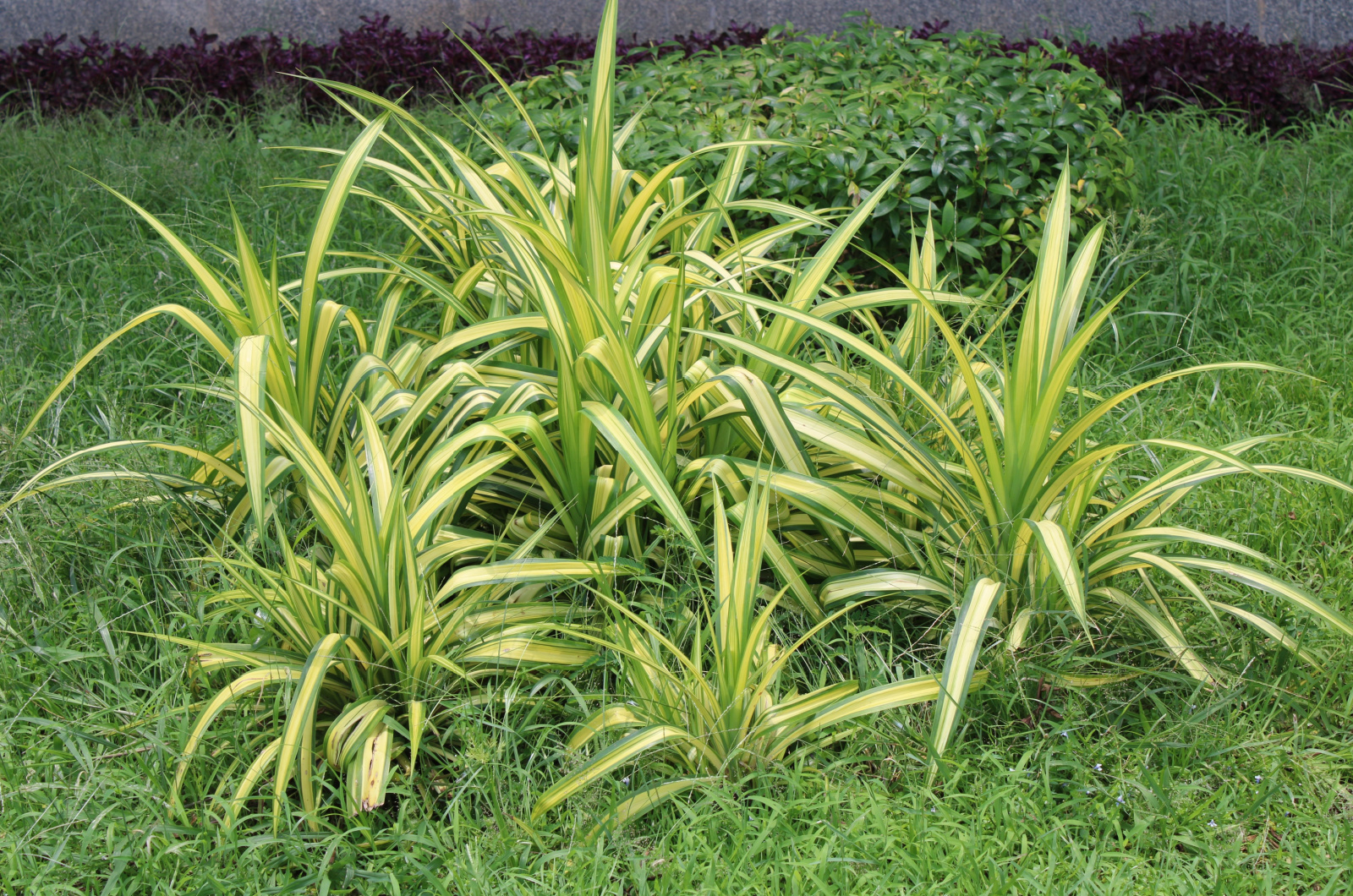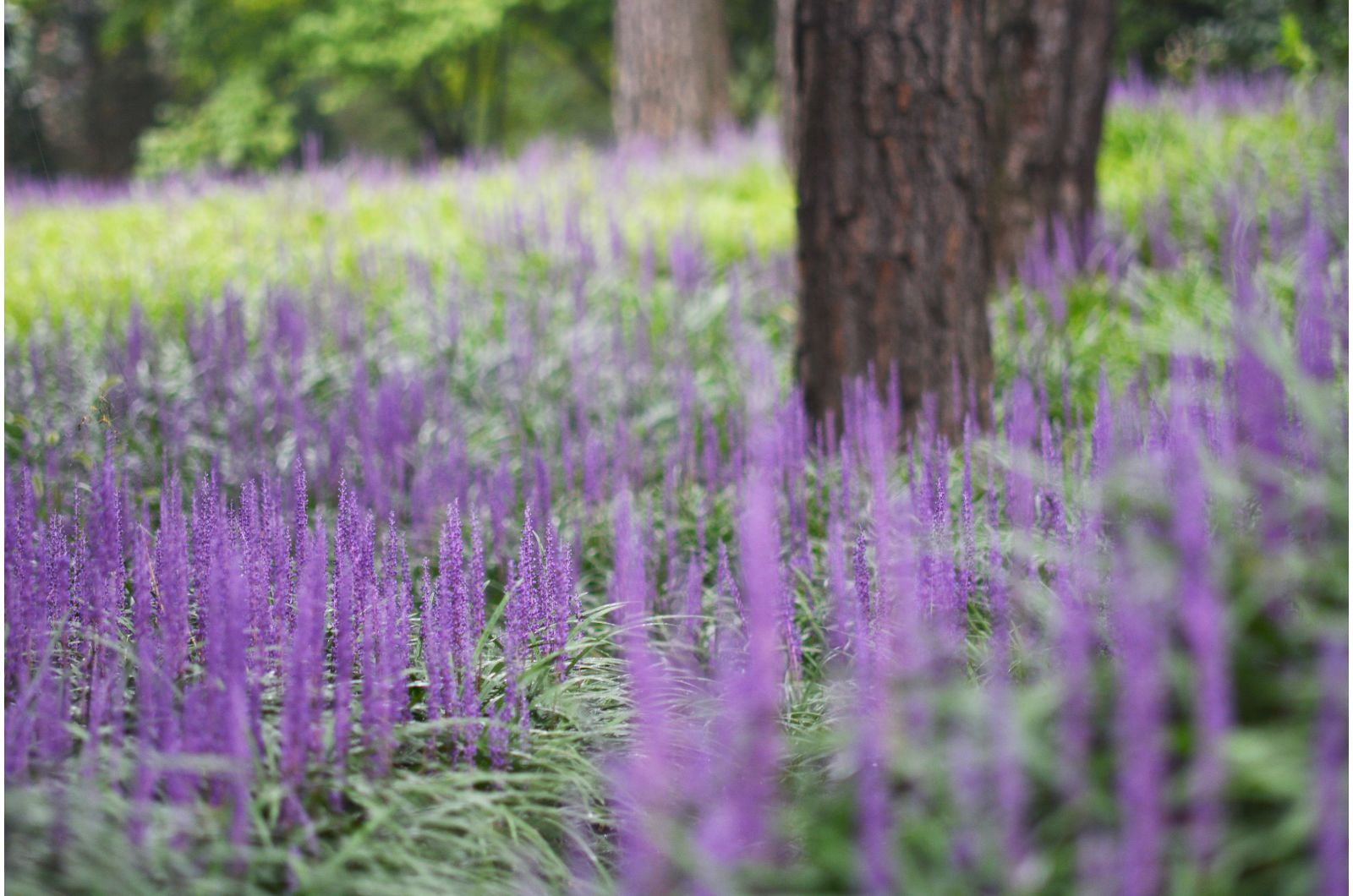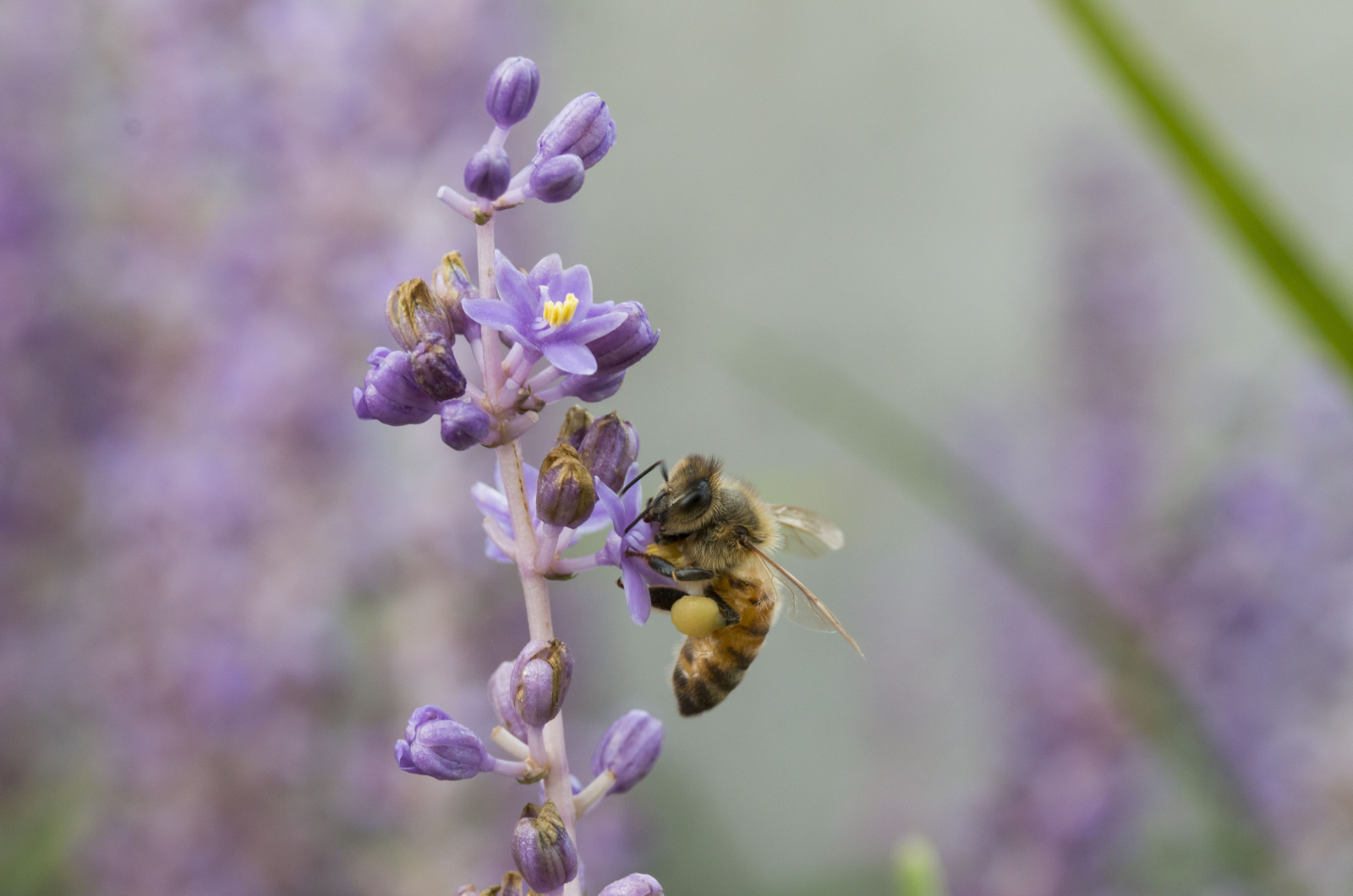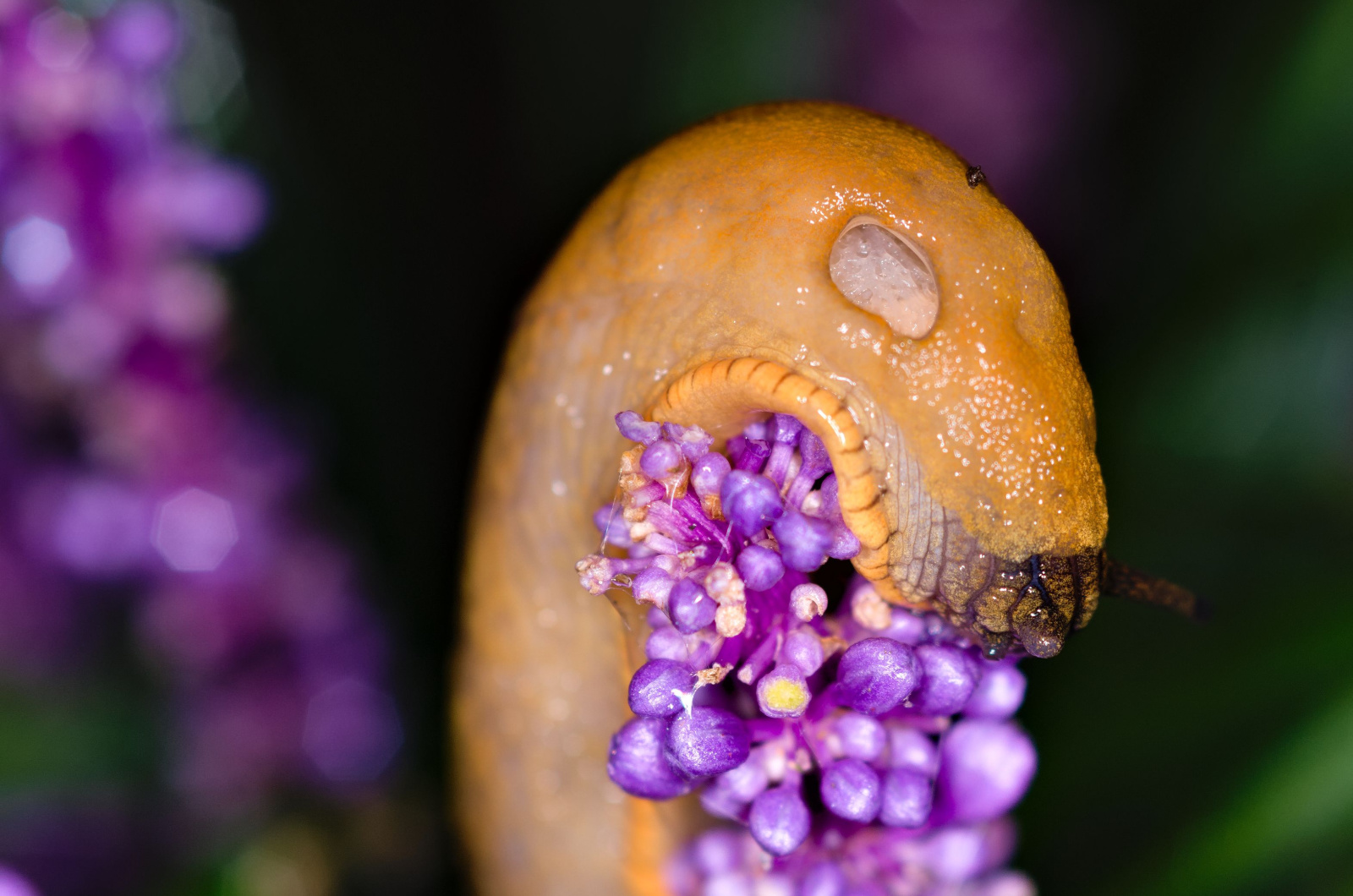Turfgrasses aren’t your only option to beautify your front yard. You can use ground covers to cover up bare patches, choke out weeds, reduce soil erosion, and give your landscape more style.
What I love about ground covers is that they are usually easy to maintain. They create dense mats that look stunning.
One such example is liriope or lilyturf (aka monkey grass). Its lavender flower spikes will add elegance and beauty to any landscape.
Here’s more about it!
It’s Lilyturf
Starting as a half-an-inch wide clump of leaves, liriope can grow up to 1-2 feet tall and wide. It boasts calming lavender spikes that emerge from deep green, sometimes variegated, foliage.
Lilyturf flowers appear in summer and adorn your garden with purple, pink, or white shades. They are tiny, but their sheer number is enough to wow anyone.
But that’s not all this plant has to offer! Liriope flowers will give way to tiny black berries. They will survive all the way through winter, when they can be a great food source for birds.
Finally, lilyturf is evergreen, which means you’ll have a splash of color all year long.
Liriope Forms A Dense Mat
The flowers are already a win in my book, but that’s not the main reason why it’s perfect for lawns.
Liriope grows and spreads fast. It can get up to 1-2 feet tall and wide. Plant lilyturf seedlings a foot apart if you want them to cover up your ground quickly.
If you don’t mind waiting a bit longer, you can space the plants wider. It will take them about 2-3 years to turn into a dense mat when planted 15-18 inches apart – or 4 years if you space them 2 feet apart.
That’s not even the best part! You can divide your lilyturf plants every 3-4 years and get more plants. This will also allow you to keep it in check so that it doesn’t choke out your lawn and other plants.
That being said, it all depends on the variety you decide to grow. The two most popular ones are blue (Liriope muscari) and creeping lilyturf (Liriope spicata).
Muscaris form gorgeous mounds and are perfect groundcovers. Spicatas are a little more dangerous. They spread through rhizomes and can choke out your other plants if you’re not careful.
In fact, you can find L. spicata on the list of invasive plants in Tennessee and Georgia. (1)
Yet, each of these varieties has its purpose. If you want your liriope to stay in the lane and act as a border plant, choose a muscari.
And if you want to cover up bare patches fast, go for a spicata. Make sure to contain it within a certain zone, though, so that it doesn’t invade your entire garden.
The good news is that it spreads less aggressively in full shade, so you can add it to a shady location without any fear.
That’s the beauty of liriope; it flourishes in a wide range of lighting, from full sun to shade!
Other Reasons For Planting Lilyturf
Although it’s native to Japan, not America, monkey grass has a lot to offer to our US landscape.
It is an evergreen perennial that needs very little maintenance. It doesn’t mind salty soils, heat or drought, and flourishes on neglect. Liriope will save you a few bucks on your water bill because it doesn’t need frequent irrigation.
And the best part about it is that it can survive in most soil conditions, as long as they are well-drained. If you want them to thrive, throw some compost in as a bonus.
I already mentioned that monkey grass can flourish in both sun and shade. Of course, it will exhibit the most gorgeous blossoms in sunnier locations. In full shade, it may become elongated and flower less profoundly.
Another thing about liriope is that it attracts all sorts of pollinators, unlike turf grasses. And you don’t have to worry if your pets take a bite out of this plant. It isn’t toxic and you’ll barely notice a few flowers missing.
You will have to prune them at least once per year. Remove the old foliage in late winter so that it can rise in its full glory come spring.
The good news is that you don’t need your pruners. Take your lawn mower, set it to the highest level, and cut back your lilyturf down to 3 inches.
What I love about monkey grass is that deer and rabbits will steer away from it like crazy. The thing I don’t like is that it is a delicious meal to snails and slugs. Be ready for these infestations and deal with them quickly.
Also, I mentioned that liriope is drought-tolerant. That means it doesn’t do well when overwatered. Avoid using sprinklers and overhead watering because that can lead to mildew and other fungal infections.
This is great news for everyone in drier climates. Yet, if you live in a region with heavy rains, your liriope may catch anthracnose – a vicious disease that browns and kills the leaves.
Finally, liriope doesn’t tolerate heavy foot traffic that well.
References:
1. Liriope spicata (n.d.). North Carolina Extension Gardener Plant Toolbox.

